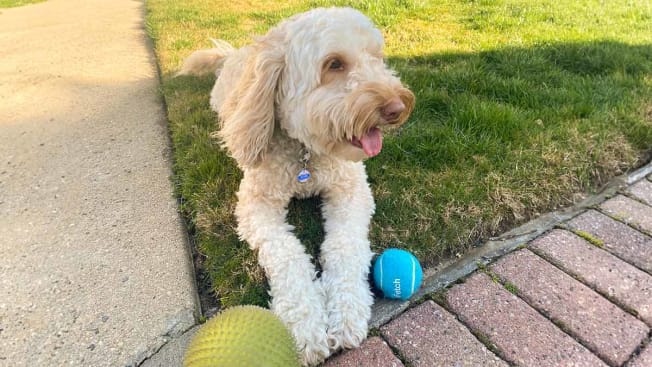Best Ball Throwers for Dogs
Our evaluators found a few that were easy to use and enjoyable for dogs
When you shop through retailer links on our site, we may earn affiliate commissions. 100% of the fees we collect are used to support our nonprofit mission. Learn more.

Whether you’re the proud pet parent of a petite Pomeranian or a towering Great Dane, there’s one thing dogs of all breeds have in common: They’re always up for an old-fashioned game of catch. Dog ball throwers are designed with energetic dogs in mind and are helpful if you tire easily or have mobility challenges that keep you from throwing a ball.
Your Guide to the Best Pet Products
Choking and Dental Hazards
Launchers aren’t meant to be put out alone with your dog while you perform other tasks; always supervise your dog while letting it play with a thrower. Many dog ball launchers come with 2.5-inch tennis balls, and these smaller balls pose a major choking hazard. “Dogs can choke on these balls—they can get lodged in their throats and are very difficult to extract due to the negative pressure they create,” says Lisa Lippman, DVM. “There is no assured safe size. Some dogs love balls, and while I wouldn’t say never play with a ball, be very vigilant. Stay away from tennis balls with abrasive fuzz that can damage teeth.” But 6 out of 7 of the launchers I tested came with fuzzy balls. Picking up a separate pack of rubber balls to have on hand may be a wise move. We’ll have more on safety precautions and tips later in the article.
Meet Our Dog Volunteer
Blake is a 4-year-old labradoodle. He agreed to dutifully chase after each ball that was launched, but it soon became apparent that he had no intention of learning how to return the balls to either the automatic launcher or the person using the manual launcher. We’re debating whether to renew his volunteer contract, but he’s such a good boy that we’ll probably cave.

Photo: Lisa Fogarty/Consumer Reports Photo: Lisa Fogarty/Consumer Reports




















